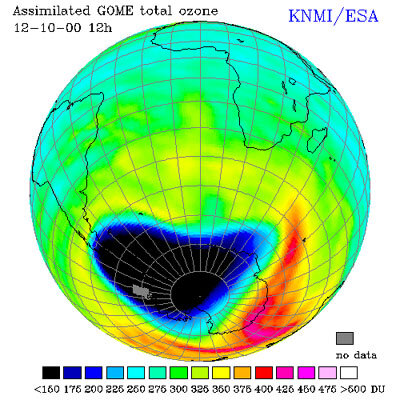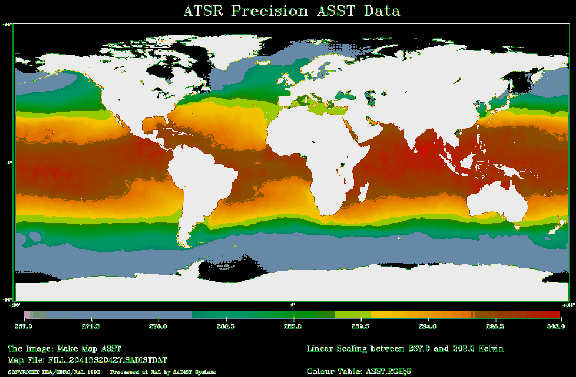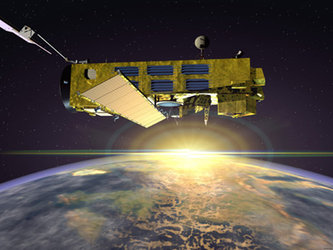Envisat and some principles of Earth-observing satellites
Earth-observing satellites were initially called remote-sensing satellites, and that is what many books, web sites and articles still call these satellites. Both names are a good indication of what these satellites do; they carry instruments that make remote measurements from space that show what is happening on Earth.
A camera is a good example of a remote-sensing instrument. Film detects the light reflected or emitted from whatever is within its field of view. The human eye is another good remote-sensing instrument.
Light is a form of electromagnetic radiation. There is a whole spectrum of electromagnetic radiation ranging from radio waves to microwaves to infrared to visible light to ultraviolet to X-rays and Gamma rays.
Instruments on Earth-Observing satellites are simply detectors - like film or the retina at the back of the eye - able to detect the radiation that reaches them from Earth.

Radiation is described by its frequency and wavelength. Of the spectrum of electromagnetic radiation, gamma rays have the shortest wavelength and highest frequency (number of complete wave cycles in a second), and radio waves have the longest wavelength and lowest frequency. Everything and every process on Earth absorbs, reflects and/or emits electromagnetic radiation in a distinctive frequency and wavelength range. For example, plants absorb all visible light except that corresponding to the colour green. Therefore plants appear green.

Each type of plant has a different specific range of frequencies that it absorbs or reflects. The specific range is known as the spectral signature and is a kind of identifying fingerprint. If, for example, a plant contains less water because it is drying out and drought is threatened, the spectral signature is different than if the plant is healthy and has lots of water.
Given all the different bands of radiation welling up from the Earth, satellites need instruments that are designed to be sensitive to different ranges of electromagnetic radiation.

Most satellite instruments that view the Earth detect visible light, the infrared wavelengths nearest to visible light (near infrared) and microwaves. Most other wavelengths cannot pass unimpeded through the atmosphere.
Each frequency band that does pass through the atmosphere to a satellite instrument carries with it information about the Earth. For example, near infrared radiation allows scientists to deduce the temperature at the surface and at different altitudes in the atmosphere.
The satellite's instruments can be passive or active.
Passive instruments detect the radiation that reaches them from the Earth’s surface and atmosphere. Active instruments emit a pulse and detect its reflection. The synthetic aperture radar on Envisat is an active instrument, whereas the Medium resolution imaging spectrometer (MERIS) is passive.
The satellite can make observations in any weather, day and night.






